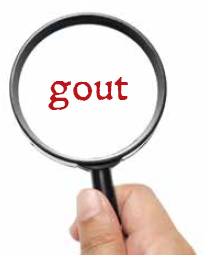 The umbrella term crystalline disease covers arthritic conditions caused by deposition of crystals and associated inflammatory response, including erythema, edema and intense pain. The two most common crystal-induced arthropathies are gout, an arthritis secondary to inflammation caused by the presence of monosodium urate (MSU) crystals formed through high levels of serum urate, and calcium pyrophosphate deposition disease (sometimes called pseudogout). Gout also describes the clinical symptoms and signs associated with the body’s potent inflammatory response to MSU crystal deposition.
The umbrella term crystalline disease covers arthritic conditions caused by deposition of crystals and associated inflammatory response, including erythema, edema and intense pain. The two most common crystal-induced arthropathies are gout, an arthritis secondary to inflammation caused by the presence of monosodium urate (MSU) crystals formed through high levels of serum urate, and calcium pyrophosphate deposition disease (sometimes called pseudogout). Gout also describes the clinical symptoms and signs associated with the body’s potent inflammatory response to MSU crystal deposition.
The lack of standardized terminology or consistent definitions for gout and other crystalline diseases results in technically inaccurate uses of the terms, with implications for how disease-related concepts are communicated in clinical and research settings, says David Bursill, MD, a rheumatologist in the Department of Health and Medicine Sciences, University of Adelaide, South Australia.
“Different terms are used interchangeably to describe different disease states. While there is no universally accepted definition of gout itself, more accurate nomenclature could facilitate better understanding of the disease and related concepts,” he explained in an email exchange with The Rheumatologist. Dr. Bursill is lead author and nomenclature research fellow for a consensus statement on labels and definitions for gout and other crystalline disease states.1 The statement is the work of the Gout, Hyperuricemia and Crystal-Associated Disease Network (G-CAN; g-can.org), a multidisciplinary, international, nonprofit organization based in Seattle.
Dr. Bursill attributes the historical lack of standardized terminology for gout to the fact that this condition has been described since ancient times, with long-ingrained usages. “The various terms have accumulated over history without any effort to refine the nomenclature. We have found the currently used terms, apart from lacking standardization, often are technically inaccurate—such as using serum uric acid instead of the correct term, serum urate—or else convey a misleading message to care providers and patients,” he says. For example, the terms chronic gout and acute gout misleadingly imply the condition exists in two separate forms. There has also been little attention to related preclinical states.
Defining Disease States
G-CAN members conducted a content analysis of 539 articles on gout and hyperuricemia in the rheumatology and internal medicine literature, published between January 2013 and January 2018. According to this analysis, disease states—defined as “clinically meaningful clusters of the presence, or absence, of two or more disease elements”—were infrequently mentioned, poorly defined or inconsistently labeled. Sixty-three unique labels exist for 13 identified disease states in gout.
